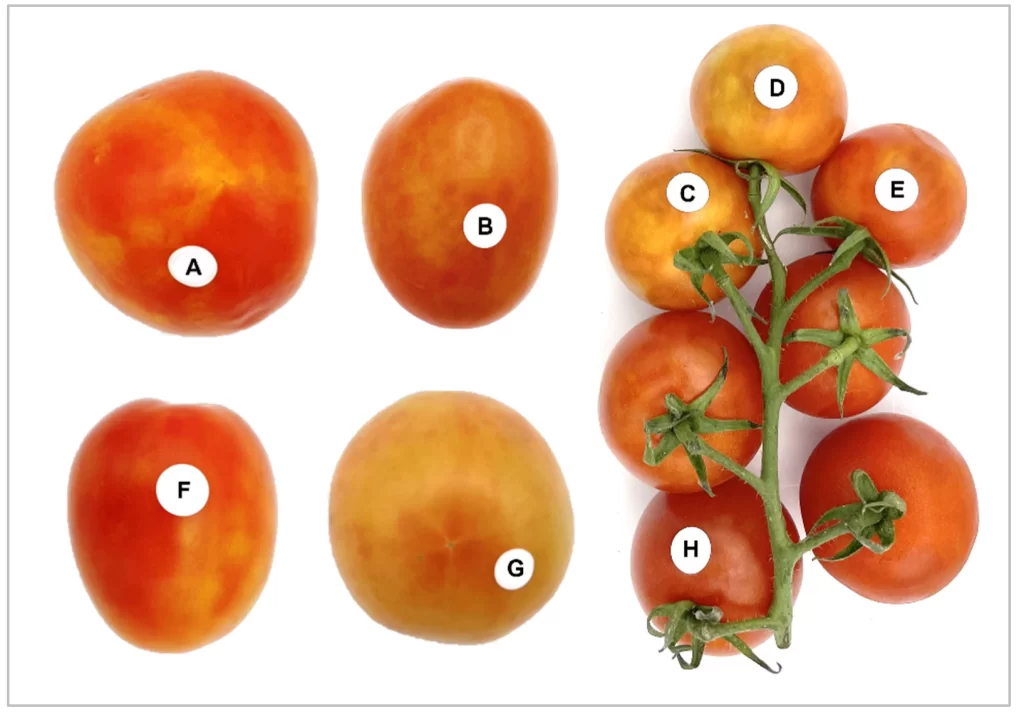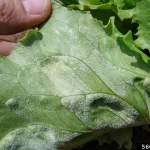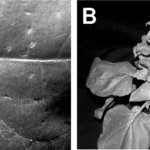Tomato Brown Rugose Fruit Virus (ToBRFV) and Pepino Mosaic Virus (PepMV) Co-infection
Introduction
Tomato growers face numerous challenges, from environmental conditions to pests, but invisible threats, such as viruses, can be particularly devastating. Among these, the Tomato Brown Rugose Fruit Virus (ToBRFV) and Pepino Mosaic Virus (PepMV) stand out for the high risk of lowering yields and how easily it can spread undetected. Recent research sheds light on how these viruses, especially when together (a ToBRFV and PepMV co-infection), can worsen the impact on tomato plants.
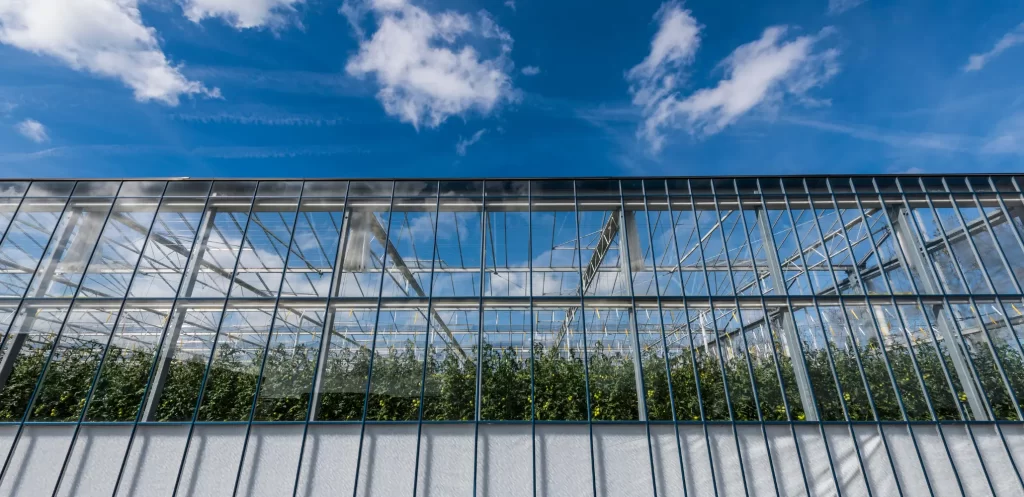
We provide great overviews of many agricultural microorganisms. Subscribe to stay updated!
Silent But Effective: ToBRFV and PepMV
ToBRFV and PepMV are viruses that cause significant damage to tomato crops. ToBRFV, first detected in 2014, quickly gained attention due to its capacity to overcome traditional resistance genes in tomatoes. PepMV (although present in tomato-growing regions for a longer period) has been observed to interact synergistically with ToBRFV. In other words, PepMV has been found to interact with ToBRFV, causing more damage than either virus would alone.
Studies have highlighted the prevalence of ToBRFV, with it being detected in wastewater (Ontario, Canada and Louisiana, USA) and groceries (Florida, USA).

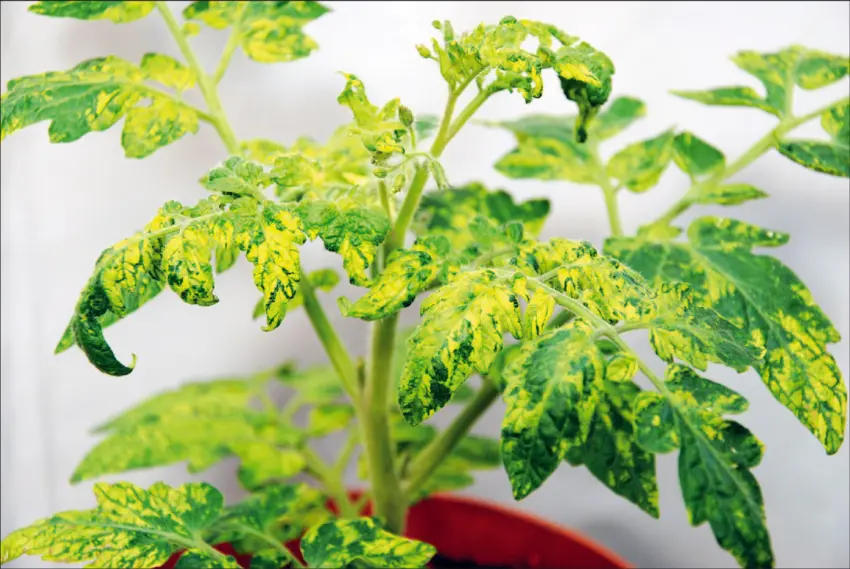
The ToBRFV and PepMV Co-infection
The study highlighted a concerning aspect: co-infection of tomato plants with both ToBRFV and PepMV can significantly enhance the severity of symptoms and increase the viral load. When a plant is infected with both viruses, not only do symptoms become more severe, but the amount of virus (viral titers) in the plant also increases. This suggests a synergistic interaction between ToBRFV and PepMV, making each other worse when present together.
The research article by Klap et. al (2020) reported an increase in PepMV in plants that are infected with ToBRFV. Here are their main observations:
- Frequency and Severity of Coinfection: It was noted that PepMV was only detected in mixed infections with ToBRFV across all 104 tested sites. This indicates a strong association between the presence of ToBRFV and the severity of PepMV symptoms.
- Viral Titers in Coinfected Plants: When ToBRFV and PepMV were studied together, it was observed that the amount of PepMV increased significantly in plants that were pre-inoculated with ToBRFV. This increase was also noted in plants that were infected with both viruses and kept at a temperature between 18-25°C. These observations were not seen in plants that were only infected with PepMV. This suggests that the infection with ToBRFV can enhance the replication and accumulation of PepMV in coinfected plants.
- Symptom Severity and Viral Load: The research discovered that when tomato plants were infected with ToBRFV and PepMV at the same time, the symptoms were more severe and the PepMV virus was more concentrated. When the plants were first infected with ToBRFV and then with PepMV, the PepMV virus was found to be even more concentrated. This explains the impact of ToBRFV on increasing the severity of symptoms and viral load of PepMV in coinfected plants.
These observations underline the complex dynamics between ToBRFV and PepMV in coinfected tomato plants and highlight the importance of understanding these interactions for effective disease management and prevention strategies in tomato cultivation.
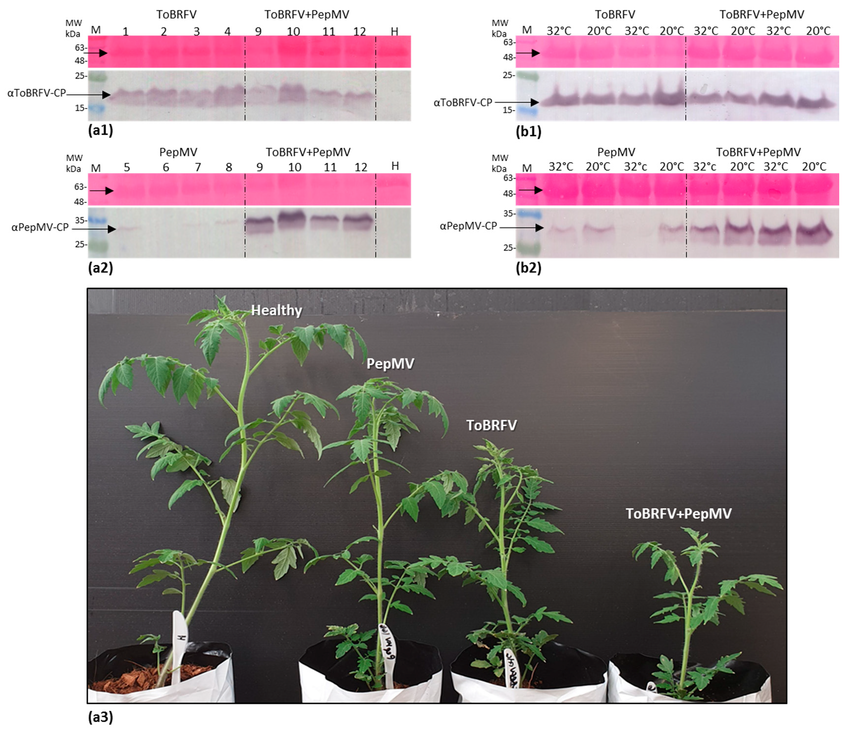
Mitigating ToBRFV and PepMV Co-infection Risk
For growers, understanding the nature of these infections is crucial. The study’s findings emphasize the value of testing for both ToBRFV and PepMV, rather than focusing on one. Here’s why:
- Early Detection to Mitigate Risk of Coinfection: The articles indicate that coinfection with ToBRFV and PepMV can lead to more severe symptoms and potentially greater crop losses than infection with a single virus. This suggests that detecting both viruses early could be crucial for implementing management strategies to mitigate their impact.
- Prevalence and Impact on Yield: The high prevalence of both viruses and their impact on crop yield and quality, emphasize the importance of comprehensive testing. Knowing the status of both viruses in the system can help growers take specific actions to manage each virus more effectively (quarantine or cleaning procedures).
- Integrated Disease Management Practices: Information from testing helps in applying integrated disease management practices more effectively. Knowing whether plants are infected with ToBRFV, PepMV, or both can guide growers in choosing resistant varieties, implementing appropriate crop rotation, and applying targeted hygiene and sanitation procedures to reduce the spread.
Conclusion: A Call to Action for Growers
Tomato growers should be watchful and take proactive measures against the risk of ToBRFV and PepMV viruses, especially when they occur together. These viruses are difficult to detect and physical symptoms means its too late, hence the need for proper management. The study highlights the complexities of viral infections in crops and emphasizes the importance of comprehensive testing strategies. By adopting a holistic approach to disease management and staying updated, growers can reduce the risk of croploss and ensure the sustainability of their farming operations.
For tomato growers and industry professionals, embracing the insights from recent research and investing in testing for both ToBRFV and PepMV can make a significant difference in managing these challenging viral foes.
Disclaimer
The information we present in this blog is based on collating published peer-reviewed scientific literature, and sources we think are reliable. This is by no means an exhaustive review of pathogens. The blog gives a small glimpse of what is known about pathogens. We encourage growers to do more research on the pathogens concerning their crops and hydroponic systems. We are not plant pathologists; thus, the information presented in the blog should not be used as professional advice to treat pathogens or operate your system.
References
Klap, C., Luria, N., Smith, E., Hadad, L., Bakelman, E., Sela, N., Belausov, E., Lachman, O., Leibman, D., & Dombrovsky, A. (2020). Tomato Brown Rugose Fruit Virus Contributes to Enhanced Pepino Mosaic Virus Titers in Tomato Plants. Viruses, 12(8), 879. https://doi.org/10.3390/v12080879
Nash, D., Ellmen, I., Knapp, J.J., Menon, R., Overton, A.K., Cheng, J., Lynch, M.D.J., Nissimov, J.I., & Charles, T.C. (2024). A novel tiled amplicon sequencing assay targeting the Tomato Brown Rugose Fruit Virus (ToBRFV) genome reveals widespread distribution in municipal wastewater treatment systems in the province of Ontario, Canada. Viruses, 16(3), 460. https://doi.org/10.3390/v16030460
Sherchan, S. P., Malla, B., & Haramoto, E. (2023). First quantitative detection of tomato brown rugose fruit virus in wastewater in Louisiana. The Science of the total environment, 888, 164001. https://doi.org/10.1016/j.scitotenv.2023.164001
Yilmaz, S., & Batuman, O. (2023). Co-Infection of Tomato Brown Rugose Fruit Virus and Pepino Mosaic Virus in Grocery Tomatoes in South Florida: Prevalence and Genomic Diversity. Viruses, 15(12), 2305. https://doi.org/10.3390/v15122305
![]()
David Santos is the CMO of Healthy Hydroponics InnoTech


